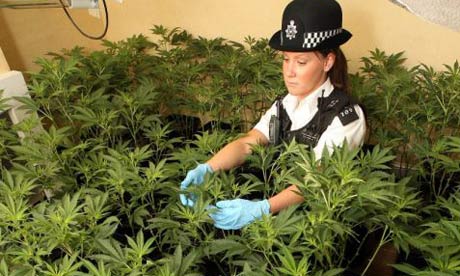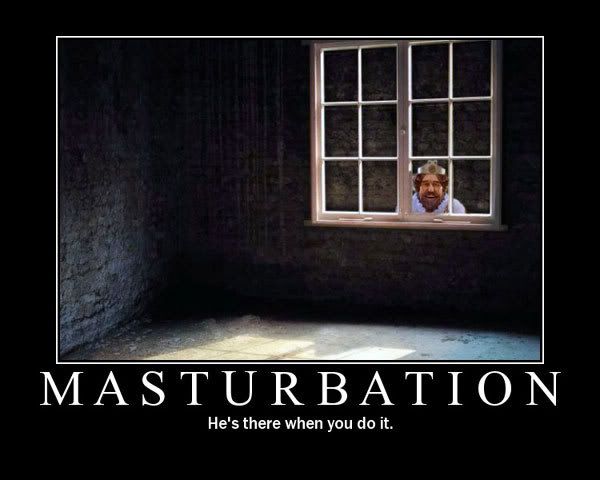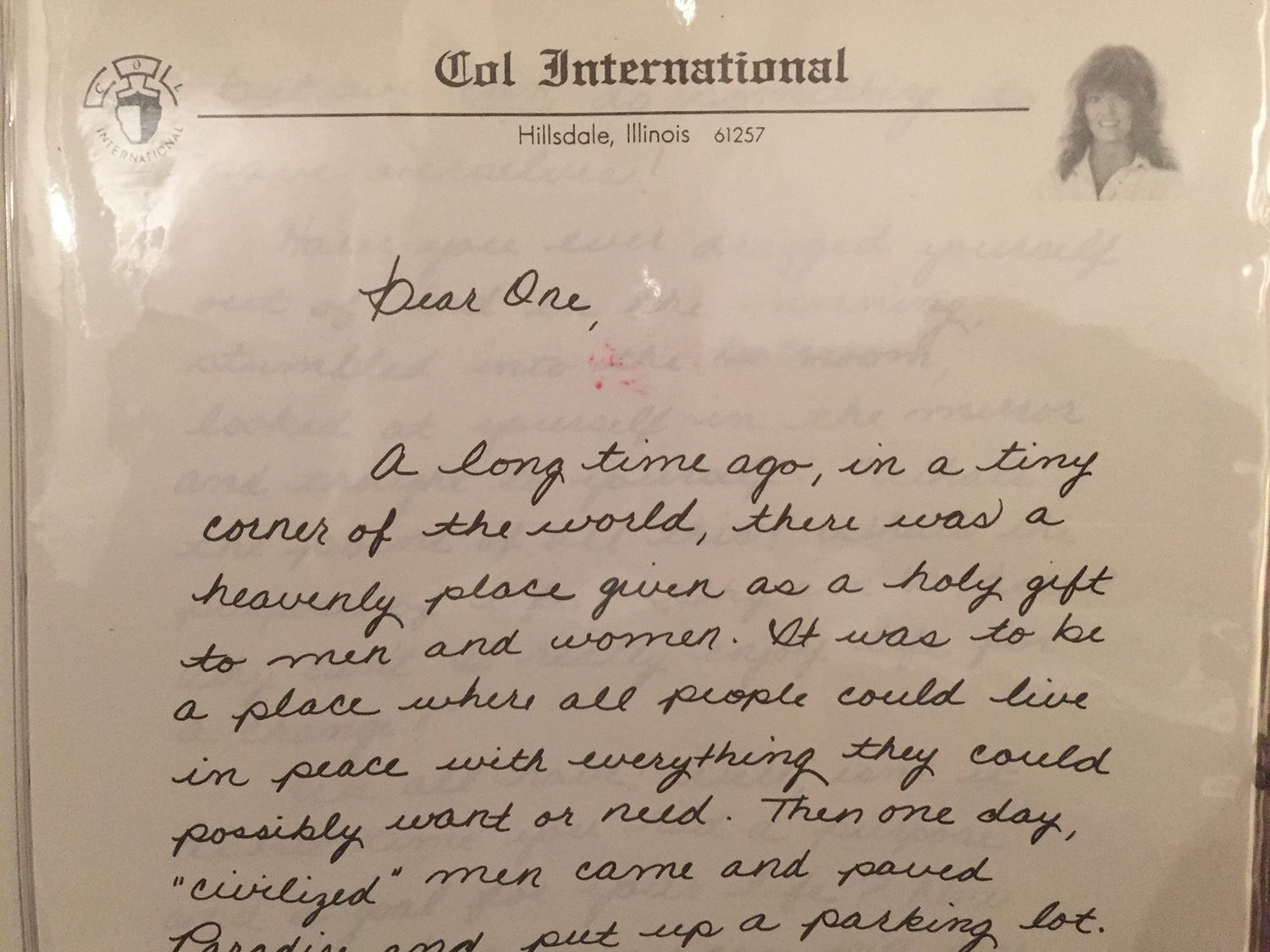Monday, May 02, 2016
5 reasons marijuana is not medicine - if you believe in and make your livelihood from prohibition...,
By
CNu
at
May 02, 2016
0
comments
![]()
Labels: addiction , disinformation , legalization , necropolitics , niggerization , professional and managerial frauds , Rule of Law
marijuana is a gateway drug - if you believe in prohibition...,
By
CNu
at
May 02, 2016
0
comments
![]()
Labels: addiction , legalization , niggerization , Rule of Law
Wednesday, April 27, 2016
addiction is less about drugs and more about human connection
By
CNu
at
April 27, 2016
0
comments
![]()
Labels: addiction , necropolitics , niggerization , parasitic , Rule of Law
Friday, November 20, 2015
syraq's speed freaks, jihad junkies, and captagon cartels...,
By
CNu
at
November 20, 2015
0
comments
![]()
Labels: addiction , co-evolution , doesn't end well , dopamine , narcoterror , necropolitics
Wednesday, November 04, 2015
there but for the grace of god: pretending to be pro-life but really just pro-______________?
By
CNu
at
November 04, 2015
0
comments
![]()
Labels: addiction , American Original , fixyt , not a good look
Sunday, November 01, 2015
the heart wants what it wants...,
By
CNu
at
November 01, 2015
0
comments
![]()
Labels: addiction , Great Filters , Tard Bidnis
Monday, January 26, 2015
if you forget how to live, what exactly are those benefits again?
By
CNu
at
January 26, 2015
1 comments
![]()
Labels: addiction , ethology , Livestock Management
Tuesday, June 03, 2014
internet addiction?
By
CNu
at
June 03, 2014
0
comments
![]()
Labels: addiction , dopamine , helplessness
Tuesday, October 08, 2013
shake and bake baby!!!
By
CNu
at
October 08, 2013
0
comments
![]()
Labels: addiction , cull-tech , cultural darwinism
Friday, June 08, 2012
transfer of the cost of the drug problem from the consuming to the producing countries
The most far-reaching and detailed analysis to date of the drug economy in any country – in this case, Colombia – shows that 2.6% of the total street value of cocaine produced remains within the country, while a staggering 97.4% of profits are reaped by criminal syndicates, and laundered by banks, in first-world consuming countries.
"The story of who makes the money from Colombian cocaine is a metaphor for the disproportionate burden placed in every way on 'producing' nations like Colombia as a result of the prohibition of drugs," said one of the authors of the study, Alejandro Gaviria, launching its English edition last week.
"Colombian society has suffered to almost no economic advantage from the drugs trade, while huge profits are made by criminal distribution networks in consuming countries, and recycled by banks which operate with nothing like the restrictions that Colombia's own banking system is subject to."
His co-author, Daniel Mejía, added: "The whole system operated by authorities in the consuming nations is based around going after the small guy, the weakest link in the chain, and never the big business or financial systems where the big money is."
The work, by the two economists at University of the Andes in Bogotá, is part of an initiative by the Colombian government to overhaul global drugs policy and focus on money laundering by the big banks in America and Europe, as well as social prevention of drug taking and consideration of options for de-criminalising some or all drugs.
The economists surveyed an entire range of economic, social and political facets of the drug wars that have ravaged Colombia. The conflict has now shifted, with deadly consequences, to Mexico and it is feared will spread imminently to central America. But the most shocking conclusion relates to what the authors call "the microeconomics of cocaine production" in their country.
Gaviria and Mejía estimate that the lowest possible street value (at $100 per gram, about £65) of "net cocaine, after interdiction" produced in Colombia during the year studied (2008) amounts to $300bn. But of that only $7.8bn remained in the country.
"It is a minuscule proportion of GDP," said Mejía, "which can impact disastrously on society and political life, but not on the Colombian economy. The economy for Colombian cocaine is outside Colombia."
Mejía told the Observer: "The way I try to put it is this: prohibition is a transfer of the cost of the drug problem from the consuming to the producing countries." Fist tap Dale.
By
CNu
at
June 08, 2012
0
comments
![]()
Labels: addiction , narcoterror , shameless
Tuesday, May 29, 2012
video games and porn...,
Increasingly, researchers say yes, as young men become hooked on arousal, sacrificing their schoolwork and relationships in the pursuit of getting a tech-based buzz.
Every compulsive gambler, alcoholic or drug addict will tell you that they want increasingly more of a game or drink or drug in order to get the same quality of buzz.
Video game and porn addictions are different. They are "arousal addictions," where the attraction is in the novelty, the variety or the surprise factor of the content. Sameness is soon habituated; newness heightens excitement. In traditional drug arousal, conversely, addicts want more of the same cocaine or heroin or favorite food.
The consequences could be dramatic: The excessive use of video games and online porn in pursuit of the next thing is creating a generation of risk-averse guys who are unable (and unwilling) to navigate the complexities and risks inherent to real-life relationships, school and employment.
Stories about this degeneration are rampant: In 2005, Seungseob Lee, a South Korean man, went into cardiac arrest after playing "StarCraft" for nearly 50 continuous hours. In 2009, MTV's "True Life" highlighted the story of a man named Adam whose wife kicked him out of their home -- they have four kids together -- because he couldn't stop watching porn.
Norwegian mass murder suspect Anders Behring Breivik reported during his trial that he prepared his mind and body for his marksman-focused shooting of 77 people by playing "World of Warcraft" for a year and then "Call of Duty" for 16 hours a day.
Research into this area goes back a half-century.
In 1954, researchers Peter Milner and James Olds discovered the pleasure center of the brain. In their experiments, an electrical current was sent to the limbic system of a rat's brain whenever it moved to a certain area of its cage. The limbic sytem is a portion of the brain that controls things like emotion, behavior and memory. The researchers hypothesized that if the stimulation to the limbic system were unpleasant, the rats would stay away from that part of the cage.
Surprisingly, the rats returned to that portion of the cage again and again, despite the sensation.
By
CNu
at
May 29, 2012
3
comments
![]()
Labels: addiction , reality casualties
Friday, April 06, 2012
the real reason elites intend to legalize some drugs?
 dailybell | The US has jailed tens of millions in the past decade over drug infractions. But now we seem to be seeing some re-thinking ... First Pat Robertson writes about legalizing marijuana and then CNN's Fareed Zakaria writes about it as well. And that's not all.
dailybell | The US has jailed tens of millions in the past decade over drug infractions. But now we seem to be seeing some re-thinking ... First Pat Robertson writes about legalizing marijuana and then CNN's Fareed Zakaria writes about it as well. And that's not all.A random search of Google shows that a bill to legalize medical marijuana is moving forward in the Tennessee House and that the Rhode Island Senate is discussing legalization as well. In Yakima, Washington, a former Seattle police chief and a former state senator will hold a public forum on the legalization of marijuana.
Now, in this article excerpted above, we think that the purpose of this theme, if that's what it is, is beginning to emerge. Australian foreign minister Bob Carr may have given the game away by referring to, "A bit of modest decriminalisation, de facto decriminalisation at the edges, simply freeing up police to be doing the things they ought to be doing... "
What Carr is saying is that the "authorities" are stretched. The system, he is indicating, has other priorities that are not being addressed because of the "war on drugs."
What might those priorities be? We can only speculate, but as the Western world tends to move in lockstep when it comes to such things (given that nation-states are pretty much an illusion at this point), we would tend to think that a decision has been made to point the resources of Leviathan at the emergent freedom movement that is roiling the Western world.
We've long predicted this moment, of course, writing over and over that the Internet is a kind of Gutenberg Press and that the same sort of society-transforming trends are taking place now as did back then.
Then, from what we can tell, the elites started a number of wars, including a so-called Peasant War that lasted about 30 years. War is a great way to control the masses because all the rules of civil society can be thrown out based on "security considerations." That's what is happening today, as then.
There are many other parallels between the circumstances surrounding the Gutenberg Press and today's Internet. We've often mentioned them in these pages. Copyright was invented in Britain after the advent of the press in order to slow the transmission of information – and now today, again, copyright is being used, this time as a weapon against the Internet.
The elites are neither imaginative nor facile. They tend to select repetitious stratagems from a sparse and brutal tool kit. They are not disappointing now. Brutality is increasingly the order of the day. Wars, depression, torture and general intimidation via Draconian laws and regulation are the order of the day.
People are perpetually and increasingly astonished at what's going on. Just the other day, CNN leftist Rachel Maddow appeared on-air with a rant against the Supreme Court for determining one could be strip-searched at the discretion of US law enforcement no matter the reason.
Maddow laid the blame on a "conservative" Supreme Court but, in fact, the stale right-left paradigm has no relevance to what's going on. The emergent fascist state throughout the West has all the hallmarks of a deliberate policy.
Of course, Maddow would have to admit that there are dynastic families based out of the City of London that want to run the world and are willing to create a kind of generalized Western Third Reich to do so.
The power elite that wants to rule the world has been destabilizing the US for several centuries – really ever since it came together as a libertarian republic. It took the Civil War to really set in motion the trends that have blossomed today, including a massive military-industrial complex, an intel-industrial complex and a penal-industrial complex.
Australia has all the signal hallmarks of an emergent fascist state including a feverish green lobby, incandescently dishonest politics, an emergent carbon tax, etc. But we have to think that the "stick" of this decriminalization is aimed at the US.
The emergent authoritarian TSA has just ordered 400 million hollow-point bullets and the US is building a trans-national spy facility out in Utah at a cost of billions. The elites have always hated and feared US exceptionalism and its general republican orientation.
Under former President George W. Bush, the US also built numerous detention facilities across the US, giving the contract to Dick Cheney's Halliburton. While there is a large intimidation/propaganda factor to all of this, the elites are probably dead serious about a transfer of resources away from petty drug matters in order to focus on social unrest, "domestic security" and "the war on terror."
Does the real reason for the War on Drugs stand revealed? Was it really intended simply to build a kind of trans-national gulag that can now be employed for the security purposes of the elite? Did people really waste away their lives in prison simply to provide a pretext for the construction of a blossoming Security State?
Conclusion: Having created and staffed this monstrosity, are the top elites now prepared to put it to "better" use. Think about the "great debates" of prohibition that have raged for the past century, the billions of words and books and white papers that have been written. Was it really nothing but an excuse? And if so, how they must have laughed ...
By
CNu
at
April 06, 2012
8
comments
![]()
Labels: addiction , agenda , elite , establishment
Saturday, June 25, 2011
PROHIBITION, not drugs, yields undesirable social consequences
Video - Billie Holiday at the 1958 Monterrey Jazz Festival
By
CNu
at
June 25, 2011
18
comments
![]()
Labels: addiction , Ass Clownery
Monday, January 10, 2011
naked capitalism
NYTimes | Dallas clubs run the gamut, from parolee and sailors-on-leave sorts of dives where a mild-mannered writer has no business being, to the high-end establishments with their slathers of French Quarter swank, heavy on gilt and red-velvet. At the Lodge, Dallas’s most upscale club, alcohol sales are up more than 11 percent from last year. “We’re doing better than real estate,” is how Michael Precker, the co-manager, put it.
Even in a market as competitive as Dallas, which is home to upward of 40 topless clubs, neither Mr. Precker nor Dawn Rizos, the chief executive of the Lodge, could think of a single club that’s closed its doors during the past two years. But what, a neophyte might wonder, made Dallas a mecca for strip clubs?
“Because we’re in the Bible Belt,” said Ms. Rizos. “There’s a church on every block, and men just like to sneak around. Most of our customers are married men. They get a little bored with their wives, they can come in here and get some flirtation, our girls make them feel good and special, then they go home and feel so guilty about it that they treat their wives really nicely.”
“It’s very Baptist,” she continued. “If you’re going to give up sin, you got to sin.”
We were having this conversation in the Champagne Room, which with its oak barrels, jeroboams and country-manor décor could pass for the tasting room of a Napa winery. The Library Room features dark wood paneling, club chairs and shelves lined with books-by-the-foot; think of the Harvard Club, except with lots of beautiful, naked women. Ms. Rizos, the daughter of two doctors and sister to three more, opened the Lodge in 1996, in part with money invested from her mother and siblings. (“No bank was going to lend me money to build this place,” she snorted.)
Ms. Rizos was determined to offer the best food, the prettiest women, the most luxurious setting. She was equally determined that the Lodge would be a good place to work, and so the club has an on-site spa and salon for employees, an on-site wardrobe service, a full-time house mother and a points system for bonuses. Dancers can get tax and investment advice, as well as tuition money for college.
“This is a club that’s structured for the girls to make money,” one dancer told me, a young woman from Milwaukee who traveled to Dallas solely to work at the Lodge. “Most clubs want their cut of pretty much anything that runs through your hands, and this club isn’t like that.”
Be smart, Ms. Rizos and Mr. Precker tell their dancers. Save your money, get educated, buy property. Plan for life after dancing. Some of the waitresses make over $100,000 a year, the top dancers well in excess of that. Ms. Rizos’s business model makes a strong case for small-scale capitalism, a model where the focus is long-term, your people are taken care of, and the pay scale is such that everyone is making money.
By
CNu
at
January 10, 2011
0
comments
![]()
Labels: addiction , theoconservatism
Wednesday, July 07, 2010
one reason you humans are "special"
 SciAm | Now back to masturbation fantasies and cognition—and this is where it gets really interesting. Baker and Bellis’s theory may be peculiarly true for human beings, because from all appearances, under natural conditions, we are the only primate species that seems to have taken these seminal shedding benefits into its own lascivious hands. Unfortunately, there have been a paltry handful of studies tracking the masturbatory behaviors of nonhuman primates. Although some relevant data is probably buried in some mountain of field notes, I didn’t come across any targeted studies on the subject in wild chimpanzees , and even the prolific Jane Goodall doesn’t seem to have ever gone there. But nevertheless by all available accounts, and by contrast with human beings, masturbation to completion is an exceedingly rare phenomenon in other species with capable hands very much like our own. As anybody who has ever been to the zoo knows, there's no question that other primates play with their genitalia; the point is that these diddling episodes so seldom lead to an intentional orgasm.
SciAm | Now back to masturbation fantasies and cognition—and this is where it gets really interesting. Baker and Bellis’s theory may be peculiarly true for human beings, because from all appearances, under natural conditions, we are the only primate species that seems to have taken these seminal shedding benefits into its own lascivious hands. Unfortunately, there have been a paltry handful of studies tracking the masturbatory behaviors of nonhuman primates. Although some relevant data is probably buried in some mountain of field notes, I didn’t come across any targeted studies on the subject in wild chimpanzees , and even the prolific Jane Goodall doesn’t seem to have ever gone there. But nevertheless by all available accounts, and by contrast with human beings, masturbation to completion is an exceedingly rare phenomenon in other species with capable hands very much like our own. As anybody who has ever been to the zoo knows, there's no question that other primates play with their genitalia; the point is that these diddling episodes so seldom lead to an intentional orgasm.So why don’t monkeys and apes masturbate even nearly as much as humans? It’s a rarity even among low status male nonhuman primates that frustratingly lack sexual access to females–in fact, the few observed incidents seem to be with dominant males. And why haven’t more researchers noticed such an obvious difference with potentially enormous significance for understanding the evolution of human sexuality? After all, it’s been nearly 60 years since Alfred Kinsey first reported that 92 percent of Americans were involved in masturbation leading to orgasm.
The answer for this cross-species difference, I’m convinced, lies in our uniquely evolved mental representational abilities—we alone have the power to conjure up at will erotic, orgasm-inducing scenes in our theater-like heads … internal, salacious fantasies completely disconnected from our immediate external realities. One early sex researcher, Wilhelm Stekel, described masturbation fantasies as a kind of trance or altered state of consciousness, “a sort of intoxication or ecstasy, during which the current moment disappears and the forbidden fantasy alone reigns supreme.”
By
CNu
at
July 07, 2010
0
comments
![]()
Labels: addiction , neuromancy , not a good look
Tuesday, June 08, 2010
the monster is us
 SFGate | There is, you have to admit, a sort of savage grace, a tragic and terrible beauty, to the BP oil spill.
SFGate | There is, you have to admit, a sort of savage grace, a tragic and terrible beauty, to the BP oil spill.Like any good apocalyptic vision of self-wrought hell, the greatest environmental disaster in U.S. history has its inherent poetry. You see that creeping ooze of black, that ungodly wall of unstoppable darkness as it slowly, inexorably invades the relatively healthy, pristine waters adjacent, and you can't help but appreciate the brutal majesty, the fantastic, reeking horror of this new manifestation of black death we have brought upon ourselves, as it spreads like a fast cancer into the liquid womb of Mother Nature herself.
Really, it's not just the incredible photographs of the spill that are, in turns, heartbreaking, stunning, otherworldly and downright Satanic in their abject revulsion. It's not just the statistics that tell us how many millions of gallons might ultimately be spilled, or the stunned scientists who can only hypothesize how this unprecedented catastrophe might affect the fragile food chain and distress the ocean's ecosystems at the very root level.
It's not even the endless, heartrending tales of livelihoods lost, industries destroyed, coastlines ravaged or wildlife killed. The fact is, any one of these aspects alone is enough to poison your soul for as long as you wish to wallow in that murky state of fatalism and doom. It is nothing but bleak.
 I think the most disturbingly satisfying thrill of this entire event -- and it is, in a way, a perverse thrill -- comes from understanding, at a very core level, our shared responsibility, our co-creation of the foul demon currently unleashed.
I think the most disturbingly satisfying thrill of this entire event -- and it is, in a way, a perverse thrill -- comes from understanding, at a very core level, our shared responsibility, our co-creation of the foul demon currently unleashed.What a thing we have created. What an extraordinary horror our rapacious need for cheap, endless energy hath unleashed; it's a monster of a scale and proportion we can barely even fathom.
Because if you're honest, no matter where you stand, no matter your politics, religion, income or mode of transport, you see this beast of creeping death and you understand: That is us. The spill may be many things, but more than anything else it is a giant, horrifying mirror.
By
CNu
at
June 08, 2010
0
comments
![]()
Labels: addiction , not a good look , parasitic
You Know You Done Fucked Up, Right?
nakedcapitalism | “Jury Instructions & Charges” (PDF) [Judge Juan Merchan, New York State Unified Court System ]. Merchan’s instruct...

-
theatlantic | The Ku Klux Klan, Ronald Reagan, and, for most of its history, the NRA all worked to control guns. The Founding Fathers...
-
Video - John Marco Allegro in an interview with Van Kooten & De Bie. TSMATC | Describing the growth of the mushroom ( boletos), P...
-
dailybeast | Of all the problems in America today, none is both as obvious and as overlooked as the colossal human catastrophe that is our...



